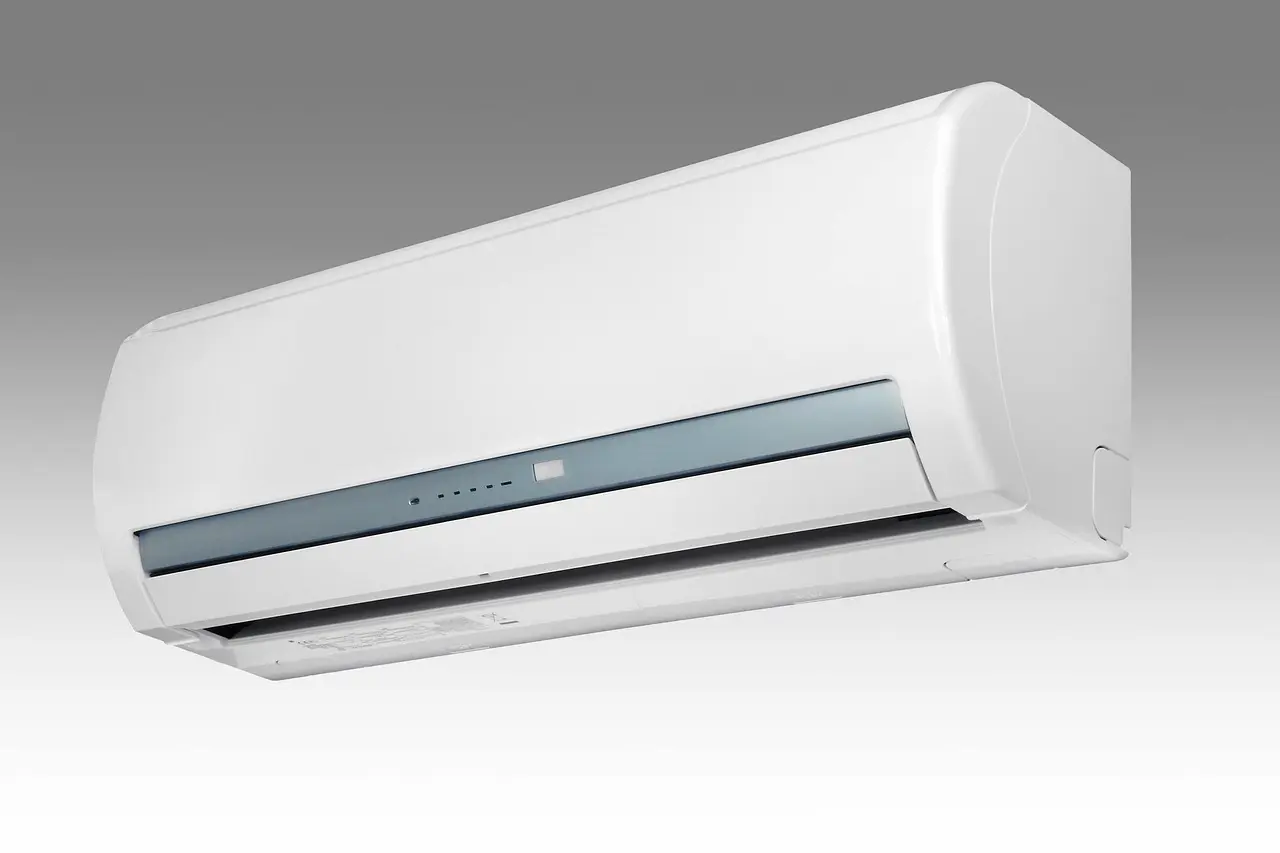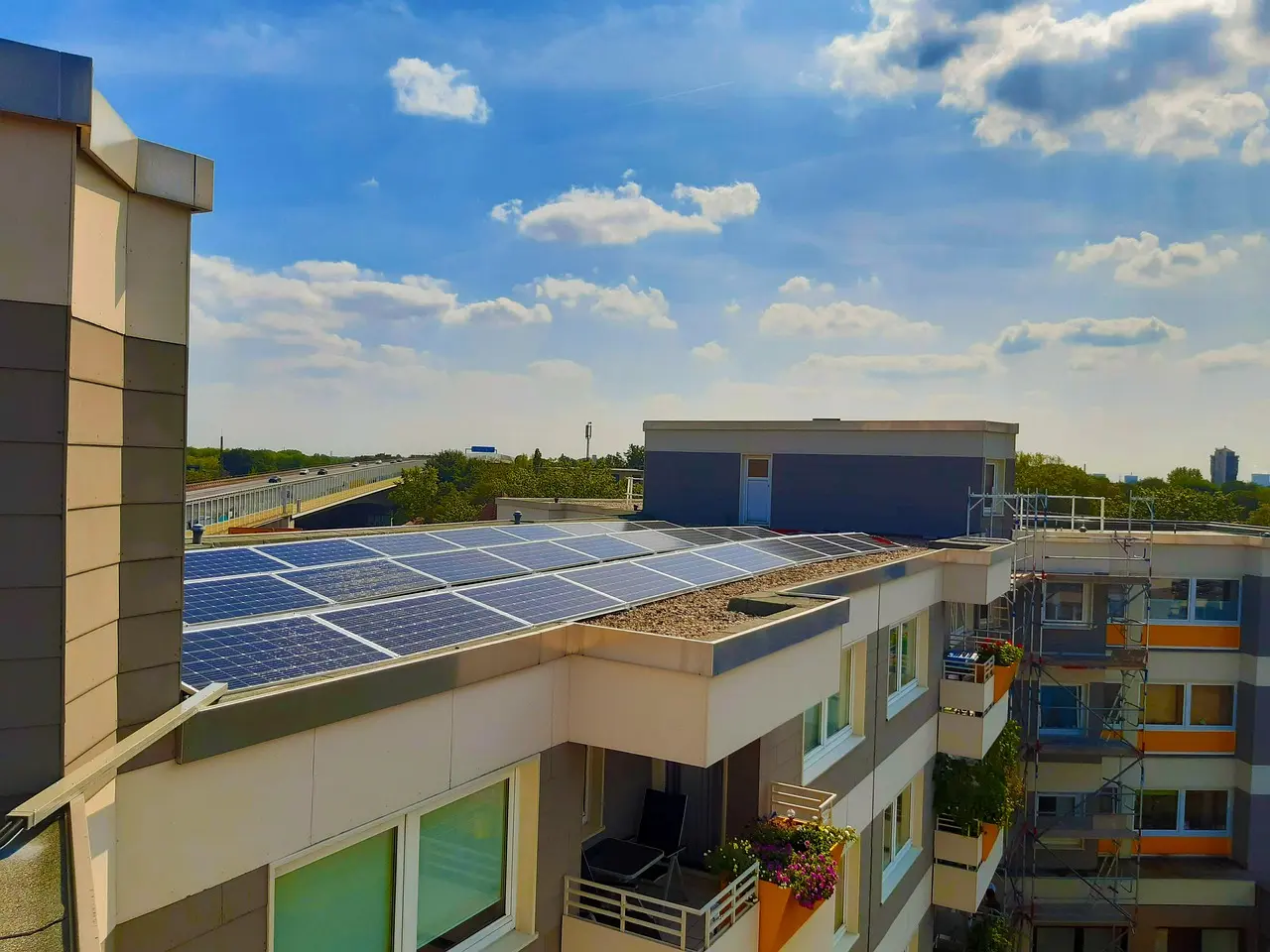Types of Solar Air Conditioners
Solar air conditioning is available in many different configurations, from basic setups to sophisticated systems that can power an entire home or business. Solar air conditioning can be as simple as a solar panel that runs a fan, similar to the one used in a hot attic. More advanced systems work similarly to air conditioners using refrigeration, coils and compressors, but they have one big difference: their power source. These systems do not use electricity from the grid but instead draw energy from the sun, either in the form of electricity generated by solar panels or heat captured through solar thermal systems.

1. Solar PV (Photovoltaic) Air Conditioners
Solar-powered air conditioners are similar to split systems, but they use electricity produced by solar panels. These systems convert solar energy into electricity, which powers the AC unit directly, thus reducing or eliminating grid electricity. The number of panels you need depends on the cooling requirements, size of your system, and amount of sun your location receives.
Batteries are sometimes added to some systems in order to store solar energy that is not needed during the day. This creates a hybrid, which is powered partially by the sun during the day and stores energy during the night. Many PV off-grid air conditioners can also be run on direct current. This is more efficient because it does not require converting DC (solar output) into AC (typical house power).
For homes or remote locations in Australia especially in sunny regions, solar PV air conditioning can provide a reliable and eco-friendly way to stay cool while cutting energy costs and reducing carbon emissions.
2. Solar Thermal Air Conditioners
Solar Thermal Air Conditioners work quite differently from PV systems. They do not convert sunlight into electricity but instead use the heat of the sun for cooling. They work similarly to solar water heating systems, utilising heat to drive fluids through a cooling cycle. They cool the air in the home by using evaporation and condensation.
Solar thermal AC systems are more efficient than PV systems at converting solar power into cooling. These systems often use fewer panels than PV systems, and they are ideal for buildings that have limited rooftop space or irregular sun exposure. These systems are limited by the fact that they cannot store heat to be used at night, as PV systems can. They are therefore ideal for climates that have hot days but cooler nights, such as in parts of Australia’s inland and desert regions where night cooling is not essential.
Both PV and thermal solar air conditioning systems offer promising ways to reduce reliance on fossil fuels, lower electricity bills, and create more sustainable, climate-friendly homes and businesses, especially in a sun-rich country like Australia.
How many solar panels are needed to run an air conditioner?
Solar panels are required for air conditioners, depending on many factors. These include the type of AC system and energy consumption. How often is it used? The smaller systems, such as solar mini split air conditioners, typically consume between 550 to 700 watts an hour per indoor unit. Most residential solar panels produce between 250 and 400 watts an hour. You would need two panels per evaporator area to meet the basic energy requirements.
Calculations for larger systems, such as central AC, are based on the area of your house along with the AC system tonnage. As a rule, you will need one ton of cooling power for every 600 square feet. A 2,004-square-foot house might require a 3.5-ton AC unit. This translates into around 1,200-watt solar power per ton. You’d require between 11 and 17 solar panels in this situation, depending on your location, the efficiency of the panels, and the amount of sunlight. The addition of battery storage will help to maintain cooling, even when there is no sunlight.

Benefits of Using a Solar-Powered Air Conditioner
Solar-powered air conditioning systems are becoming increasingly popular with Australian homeowners and business owners. These systems are a smart and sustainable alternative to conventional cooling, given the abundance of sunshine in Australia, as well as the rising electricity demand. They can reduce the reliance on grid power by harnessing solar energy. This makes them particularly valuable in urban and remote areas.
The potential to save a lot of money on energy is one of the biggest advantages. Solar AC units in sunny areas can reduce electricity bills dramatically by using sunlight to generate power. They also contribute to lower emissions of greenhouse gases since they do not burn fossil fuels. They are therefore an environmentally friendly option, which supports Australia’s efforts in reducing its carbon footprint and fighting climate change. Solar air conditioners offer greater independence by continuing to run during power outages or in locations off-grid, as long as there is enough sunlight.
Solar air conditioning systems offer a number of benefits. They are not only environmentally friendly and financially beneficial, but they also represent a solid long-term investment. Solar panels are reliable for decades with minimal maintenance. They can last up to 25 years. After the initial cost of installation is recovered, ongoing operating expenses are low. Solar air conditioning systems can be adapted to any size building, from small homes to large businesses. Solar-powered cooling has become a major part of Australia’s sustainable energy future as it continues to embrace cleaner solutions.



